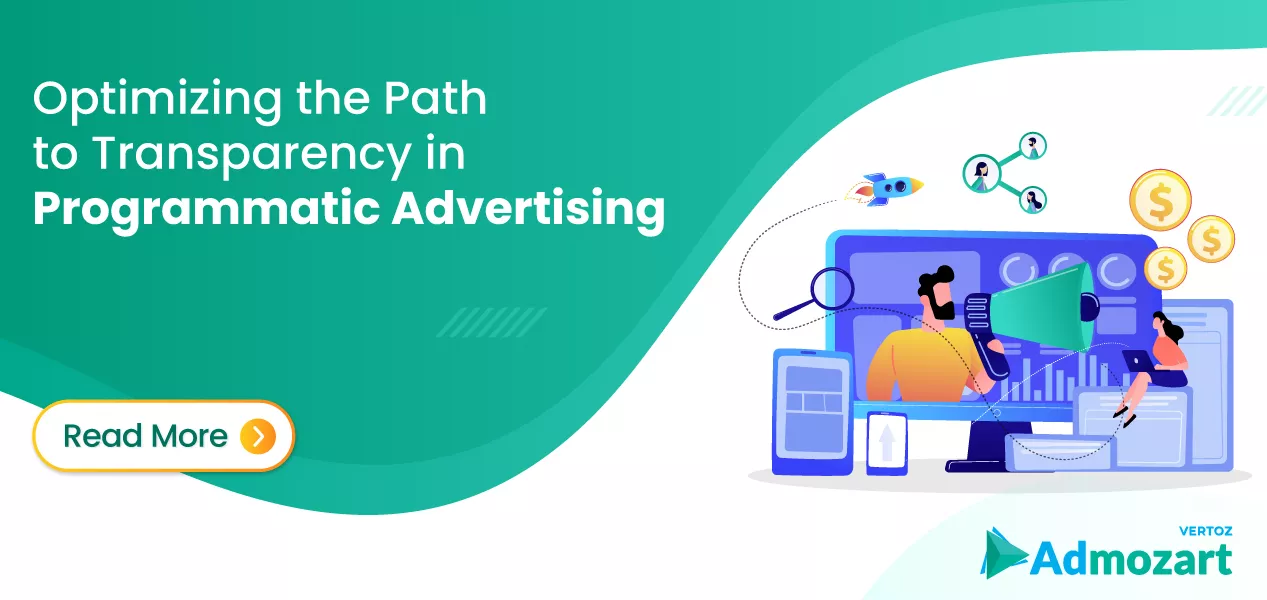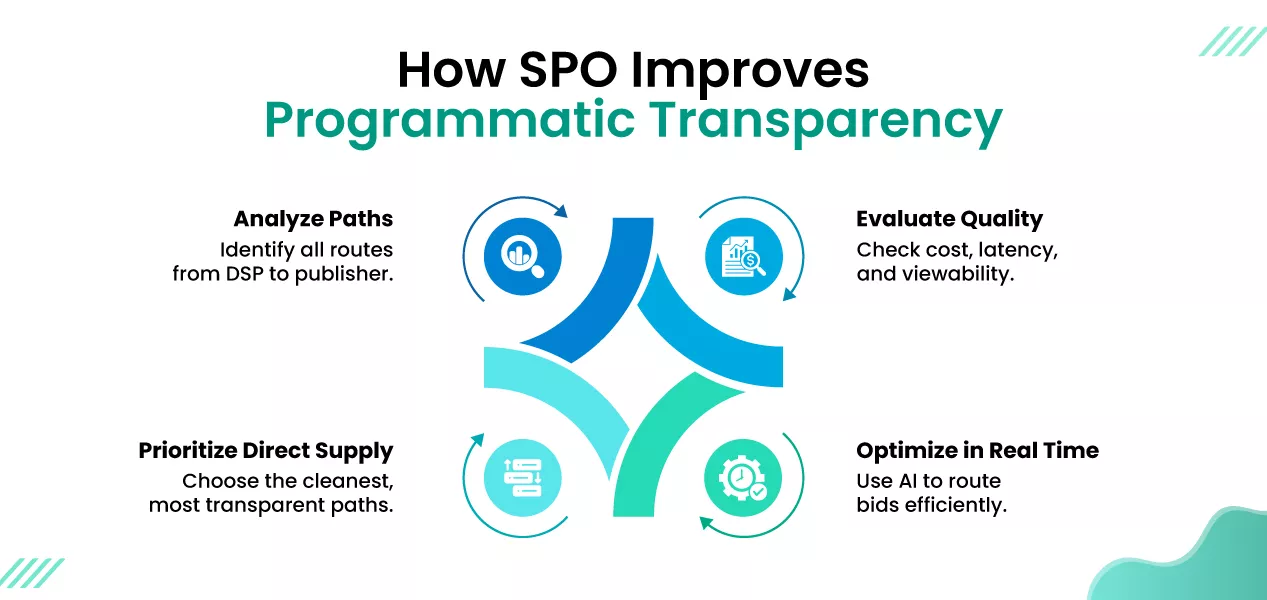
The programmatic advertising ecosystem was built to bring efficiency, scale, and precision to digital media buying, but over time, it has also grown into one of the most complex systems in the industry. Between the advertiser’s budget and the publisher’s impression, that same dollar often travels through multiple Supply-Side Platforms (SSPs), exchanges, and intermediaries, each taking a cut.
This opacity, often called the ad tech tax, has made it difficult for advertisers to see where their spending actually goes or whether every impression purchased is truly viewable. Supply Path Optimization (SPO) steps in to restore trust, efficiency, and accountability to the entire programmatic supply chain.
What does SPO really mean?
The main goal of Supply Path Optimization is to improve how advertisers use programmatic channels to reach their target audiences. A Demand-Side Platform (DSP) can access the same publisher inventory through several different routes, some direct, others through multiple resellers. SPO analyzes these paths in real time and identifies the most efficient, transparent, and cost-effective route to each impression.
Think of it as streamlining your digital logistics: instead of sending one ad dollar through six different toll booths, SPO ensures it takes the shortest, cleanest route possible; ideally, a direct-to-DSP connection or a certified two-hop path.
Without SPO, advertisers risk bid duplication, inflated prices, and wasted impressions. With it, the buying process becomes leaner, clearer, and more accountable, ensuring that more of the budget actually reaches quality publishers.
Why Transparency Is the New Advantage
In 2025’s programmatic advertising landscape, visibility isn’t just good practice; it’s a competitive edge. The market’s maturity has exposed inefficiencies, and advertisers now expect more than performance; they expect proof.
That’s why SPO has evolved from a technical optimization into an operational necessity. By relying on industry standards like sellers.json and the SupplyChain Object (SChain), advertisers can verify who is selling the inventory, how many layers exist between buyer and publisher, and whether the source is legitimate.
This level of ad tech transparency doesn’t just eliminate waste; it actively prevents ad fraud, filters out low-quality or MFA (Made-For-Advertising) sites, and builds confidence in every transaction. In a world where privacy is important, being open is the new way to build trust.
The Advertiser’s Advantage
When executed effectively, SPO delivers measurable impact on both performance and efficiency:
- Lower Tech Tax: Fewer intermediaries mean less budget lost to hidden fees and markups, turning more of every dollar into working media.
- Access to Premium Inventory: Clean, direct supply paths prioritize brand-safe environments where campaigns reinforce reputation and trust.
- Reduced Latency: Shorter delivery chains load faster, improving viewable impressions and user experience.
- Cleaner Data: With fewer hops between buyer and publisher, the resulting data is more consistent, leading to better programmatic efficiency and smarter optimization decisions.

How AI Keeps SPO in Motion
The sophistication of SPO today relies on AI optimization and machine learning (ML). Manual audits can’t keep pace with the billions of real-time auctions happening every day, but AI can.
Modern programmatic platforms now use continuous, real-time path evaluation to assess multiple variables for every impression:
- Cost: Is this path cost-effective relative to its value?
- Latency: How fast can the ad load through this route?
- Quality: Does the publisher have a strong viewability and low invalid traffic (IVT) history?
- Duplication: Is the same inventory available through a cleaner path?
The AI then prioritizes and reroutes the bid dynamically, optimizing spending at the moment of decision. It’s no longer about quarterly reviews of efficiency; it’s about real-time, data-driven refinement second by second.
Inside an Integrated DSP-SSP Framework
For SPO to work seamlessly, integration between buying and selling platforms is critical. A unified programmatic infrastructure, like the one powering Admozart’s Demand-Side Platform and Supply-Side Platform, ensures advertisers always access the most direct and verifiable supply routes.
This connected framework allows for:
- Smart Bidding Logic: Filtering redundant bid requests to prevent waste and self-competition.
- Prioritized Directness: Favoring direct, premium publisher connections over resold inventory.
- Centralized Analytics: Offering unified visibility across cross-channel programmatic activity from display to CTV to DOOH without fragmentation.
Through this approach, Admozart transforms SPO from a backend efficiency mechanism into a strategic enabler for more intelligent, ethical, and performance-driven campaigns.
From Efficiency to Accountability
Supply Path Optimization is more than just a way to cut costs; it’s becoming the basis of smart media buying as programmatic grows. SPO improves performance by cutting down on unnecessary bid requests and technical waste. It also helps sustainable advertising by lowering the carbon footprint of ad transactions.
It’s clear from SPO that the industry wants to be open and efficient, and everyone needs to be responsible for what they do.
Comments are closed